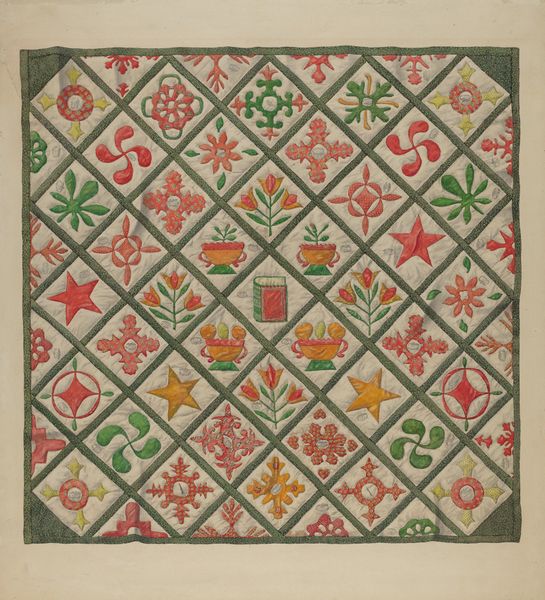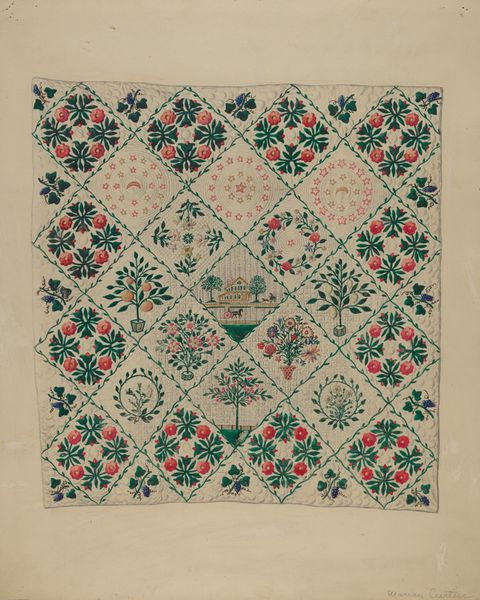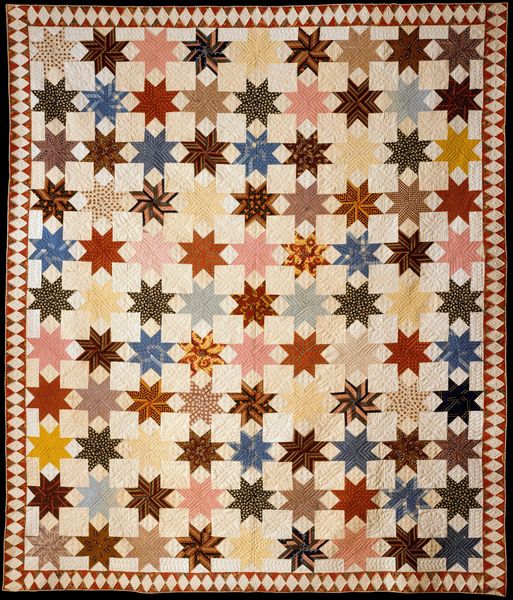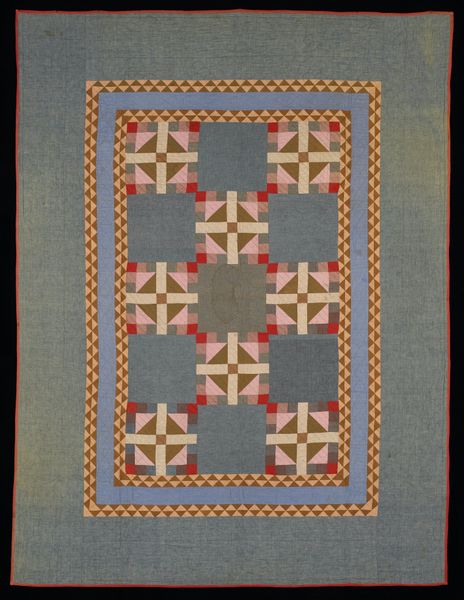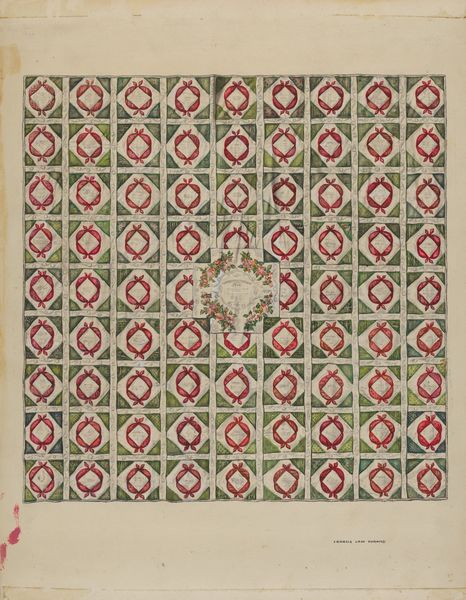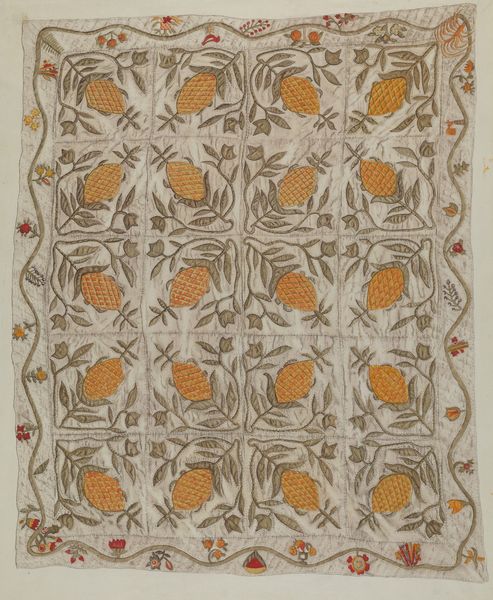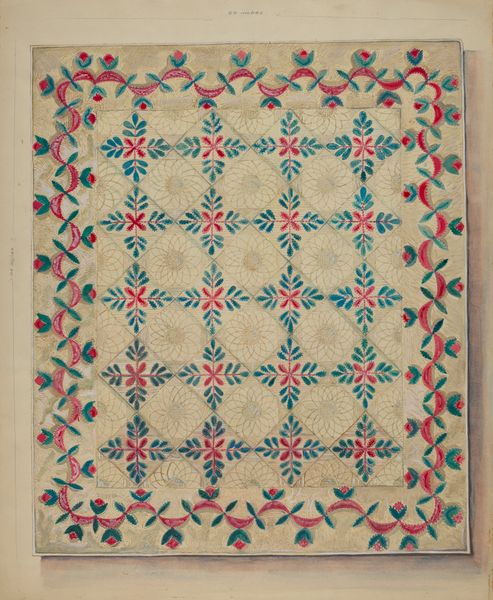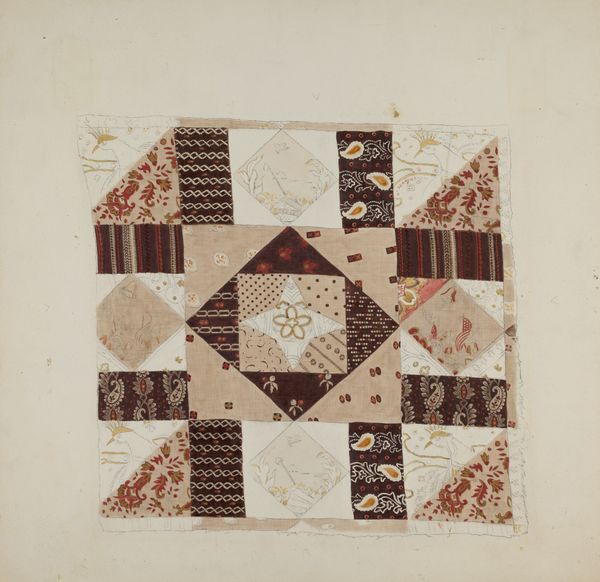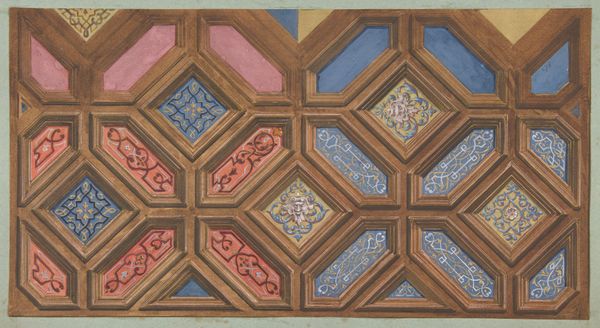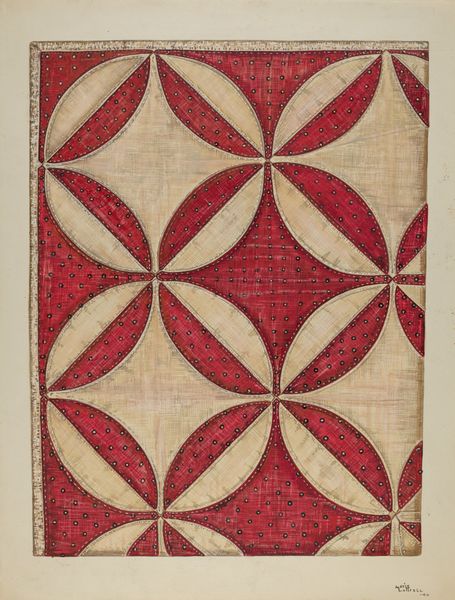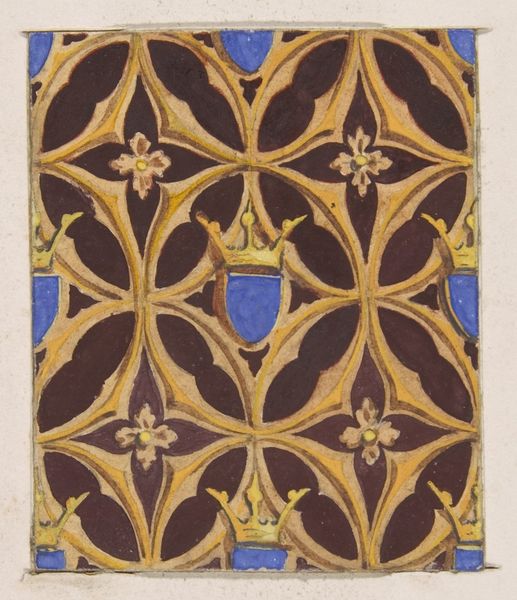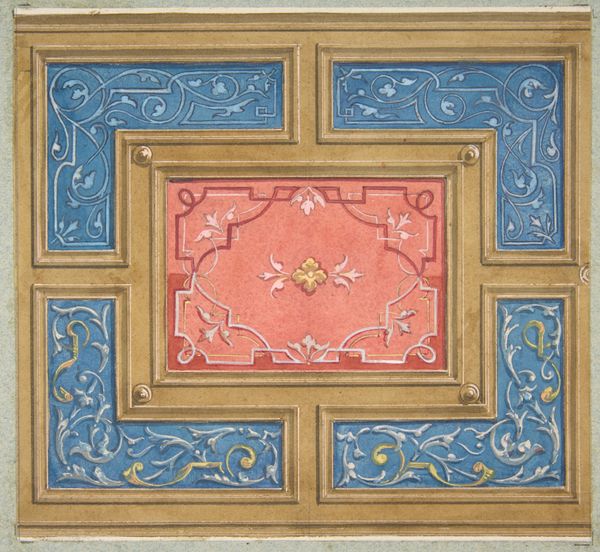
textile
#
textile
#
geometric pattern
#
folk-art
#
geometric
Dimensions: 84 3/4 x 82 3/4 in. (215.3 x 210.2 cm)
Copyright: Public Domain
Curator: Immediately I'm struck by this sensation of warmth, both visually and the imagined physical comfort. It is intimate in scale, really quite domestic, but look closer at the 'Quilt, Nine Patch Pattern Variation' made between 1843 and 1846. Editor: The material reality of that statement really hits me. Think of the labor that goes into something like this. The piecing together of fabric, the literal hands-on process. This isn’t just a design, it's work. What does its display in the Metropolitan Museum say about how we value folk art today, a craft born out of necessity? Curator: Exactly! And each patch is a world of its own, a potential origin story: the fabric's dye source, the cloth maker, how it got here. Every geometric block hints at a complex network of resources and hands that facilitated its construction. There’s history stitched into every seam. But the faded colors suggest something deeply personal and lived-in. What kind of person would pour hundreds of hours into a single piece of art? Editor: Well, I suppose it could also have a rather unsettling mood. These individual patches resemble fragmented memories; how time softens edges and erodes our ability to perfectly reconstruct experiences. Each little square is only holding part of a much larger design. So while there is an undeniably cozy aesthetic happening, something sad resonates deeply too. Is it for lost things or for things that can't be kept or perfectly reproduced in our memories? Curator: What’s especially potent for me, viewing the Nine Patch variation, is recognizing that this quilt may well be considered ‘anonymous’— the creator remaining unnamed. And the anonymity shifts how the piece gets perceived from merely being about individual artistry to being centered more within societal forces shaping material culture production. And how this resonates, too, with broader themes about gendered division in labor in early- to mid-19th century America? Editor: So beautifully put. These tangible pieces carry so much intangible history and humanity with them, more than initial glance reveals. They prompt reflections on transience, memory, and legacy, resonating through the decades since its stitching!
Comments
No comments
Be the first to comment and join the conversation on the ultimate creative platform.
